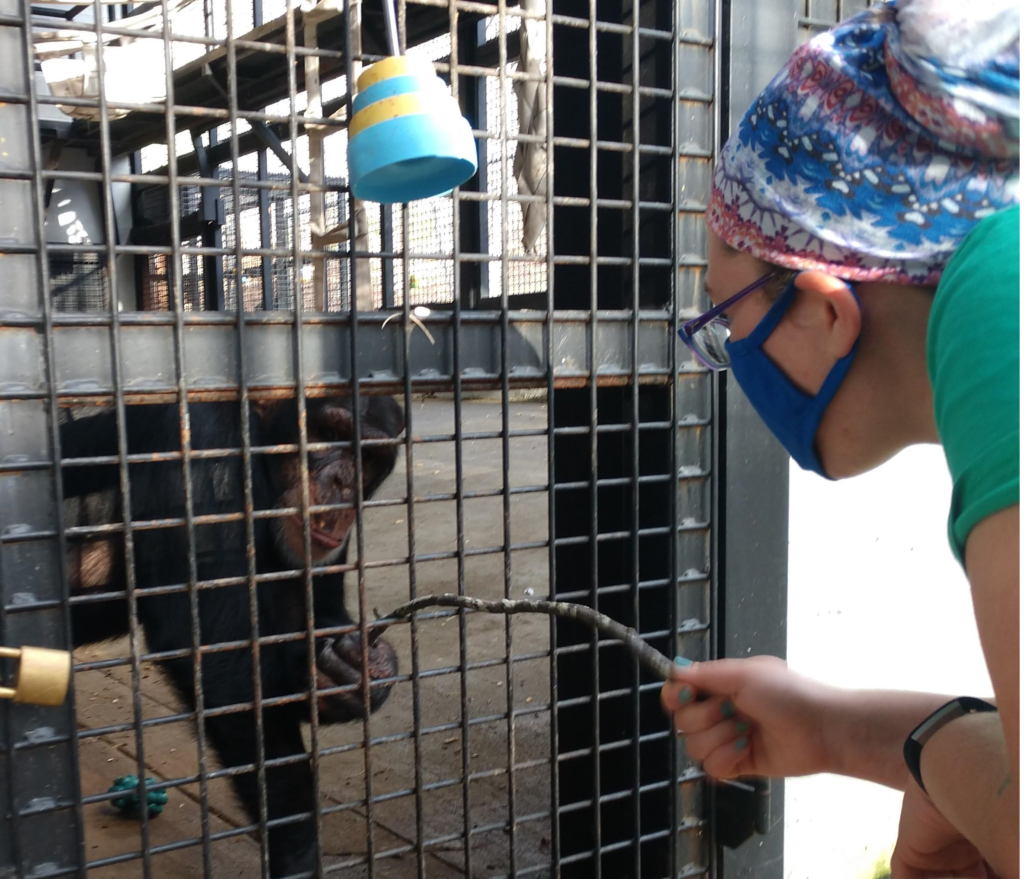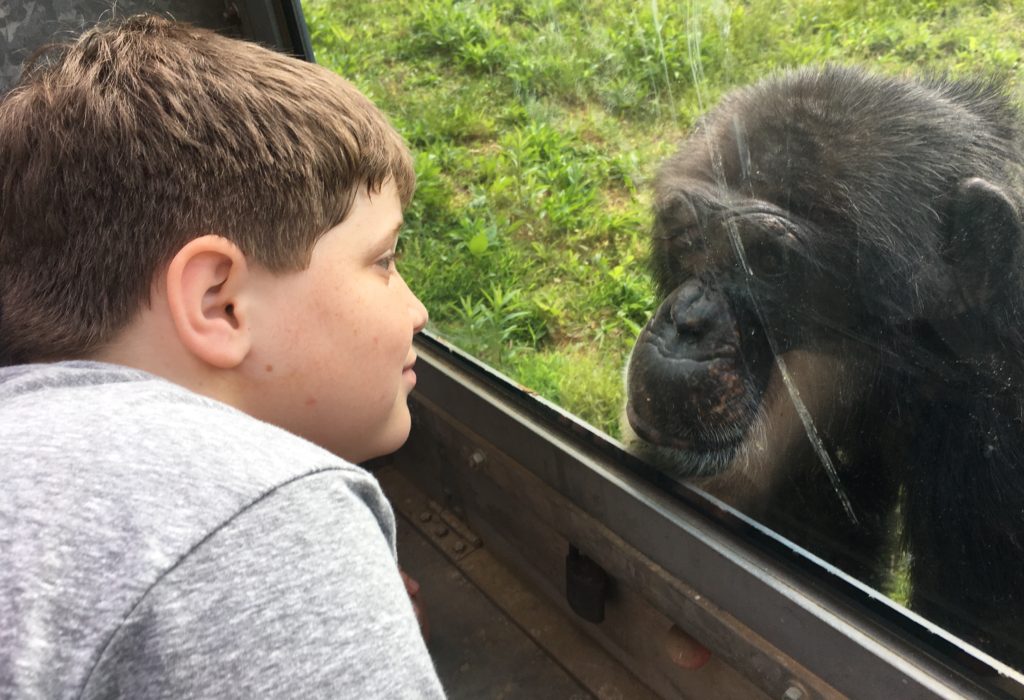
Building a Relationship with an Animal

by Kailie Dombrausky
Building a relationship with an animal is an incredibly unique and rewarding experience. Anyone who has an animal as a pet knows the feeling of pure love and excitement when your dog rushes to greet you any time you walk through the door, or when your cat walks onto your lap and spontaneously erupts into one loud purring machine.
But building a relationship with an animal while there is always some layer of physical barrier between you – be it stainless steel mesh or bullet proof glass – is a different game. This type of relationship is one that is built on mutual trust and understanding. I can pick my cat up and put him in my lap. You can’t do that with a chimpanzee. In fact, for safety reasons, we never make direct physical contact with the chimps. Instead, they choose when, and who, to interact with.
It is always a gracious and humbling moment when they choose to interact with you.

The owner dynamic
The dynamic between humans and domestic animals is often viewed as “owner-pet”, with the human having dominion over the animal. But chimps aren’t pets, and we certainly don’t own them. Instead, working with exotic animals, especially ones so intelligent and similar to us, you are forced to view them as equals. You can’t direct or tell them what to do. Instead, you have to ask. And if you have a strong enough relationship, they will comply. Because that’s what friends do.
Sometimes they really enjoy messing with you and pulling pranks, because that’s what friends do too. I find it incredibly rewarding getting to know so many chimpanzees, both as individuals but also understanding what role they play in their group. Having the opportunity to work with many young chimps and watch them grow up and make lifelong friends is an amazing experience.
Communicating with animals
The chimps do understand a great deal of spoken language and caregivers are trained to be fluent in chimp vocalizations. But there is something to be said about being able to communicate primarily through non-verbal communication. It’s about understanding the look in their eye, reading body language, and anticipating their behavior based on a few small cues.
The best thing about developing a relationship with animals is learning firsthand all the lessons they have to teach us. Chimps have a reputation for being violent and aggressive. If you’ve ever seen a chimp fight, you know that there is much truth behind this claim. Even their play sessions can get a little rough.
They are very upfront and transparent with their emotions. But despite that, they are always quick to make up after an altercation -they do not hold grudges. When the excitement settles, two chimps that were just screaming at each other can often be found eating next to or grooming the other.
Humbling moments
Chimps also have a keen knack for proving us caregivers wrong and keeping us humble. We may build an enrichment or create a scatter that we think they’ll absolutely love, and it barely gets touched. Other times, we’ll give them a toy thinking only one or two individuals will show interest and the whole group goes crazy for it. You can show up, ready for the day with a plan you’re certain will work, and the chimps will resist every step of the way. They really get a kick out of pushing our buttons.
Although the good mostly outweighs the bad, there are challenges to building a relationship with animals, particularly chimpanzees. You have to accept them on their terms. Be flexible. Know when to draw the line between play and work. Recognize that you are here for them, they’re not here for you.
A lot of the chimps I work with, specifically the younger ones, love to play and are very human-oriented. However, part of being in sanctuary means the chimps having the opportunity to socialize with each other. We all love to play with the chimps, yet we recognize the importance of them building strong bonds with their group members.
Knowing when to walk away, to not steal too much attention from their friends, is one of the most important, and hardest, parts of my job.
